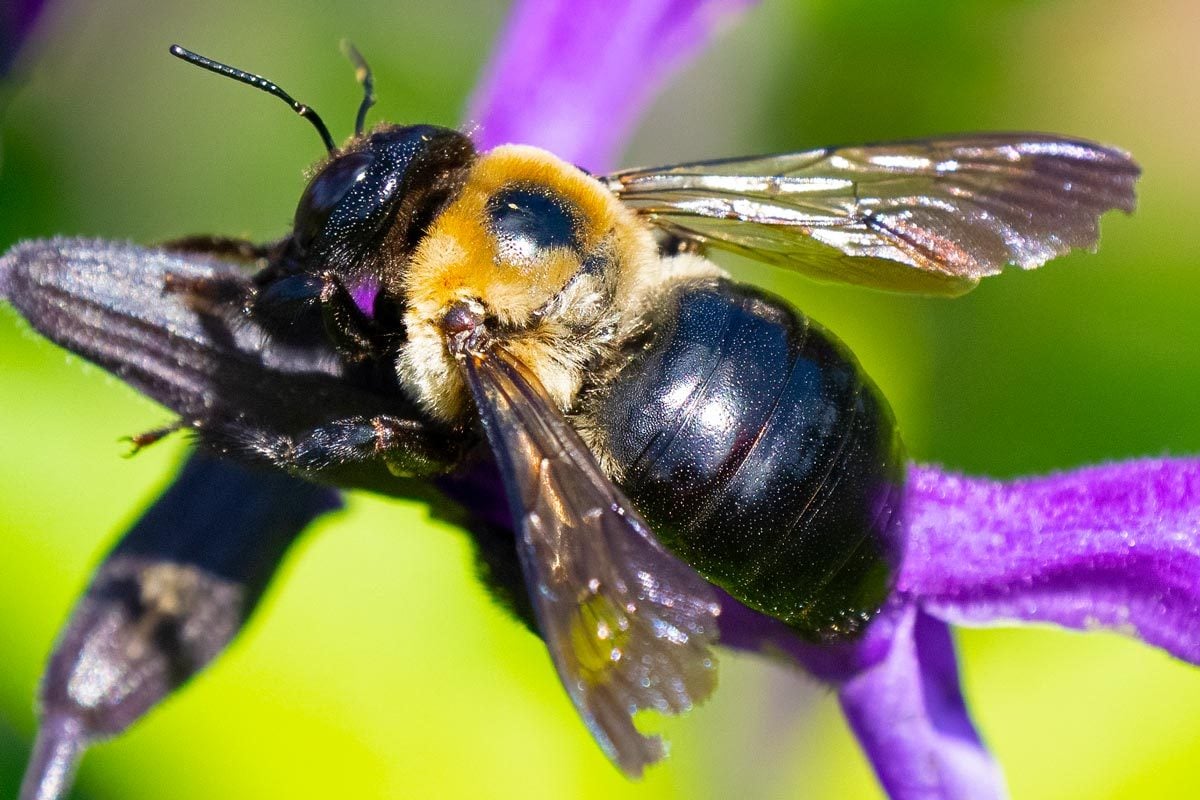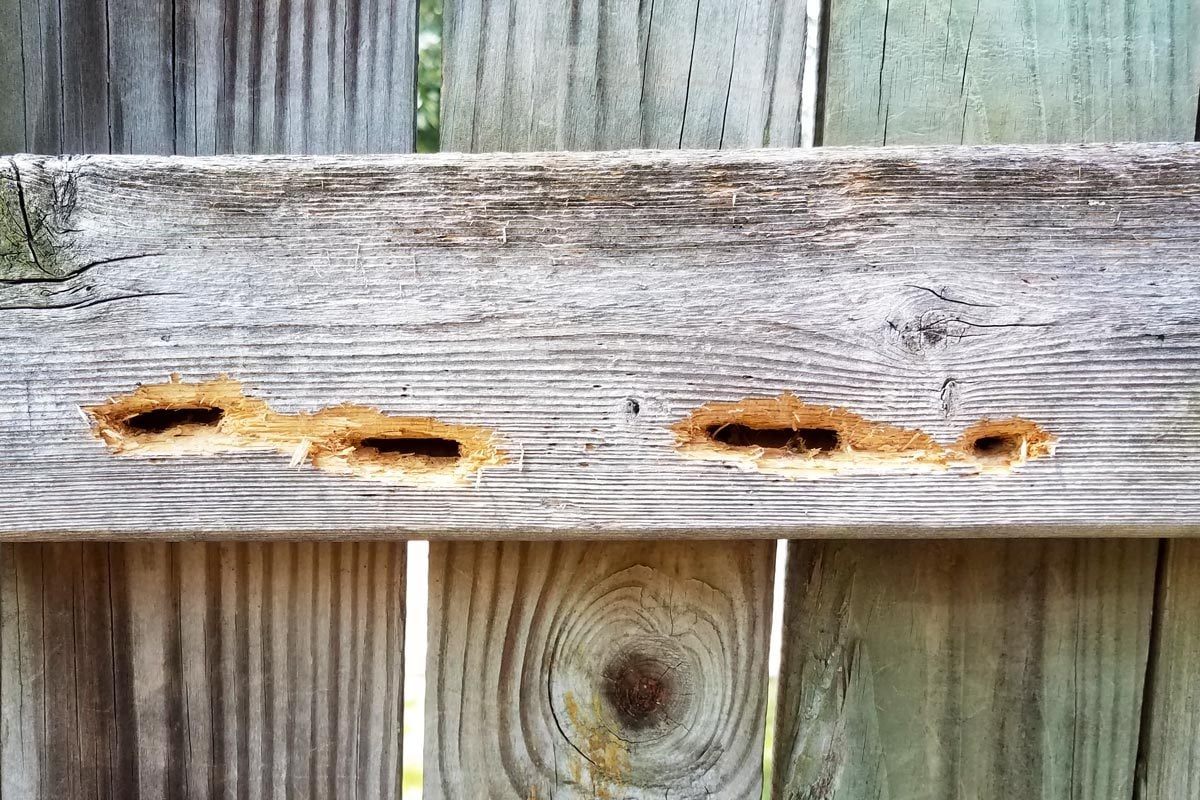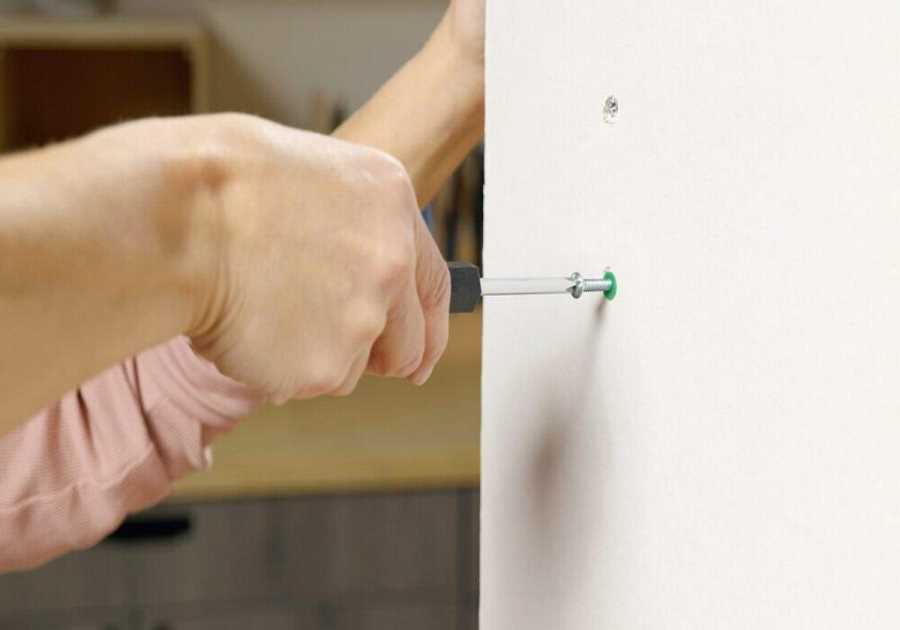Carpenter bees are a source of joy when we see them peacefully buzzing among the flowers. But occasionally they can become a frustration, especially when they gnaw into our wooden homes, fences, decks and patios.
“But these bees don’t actually eat the wood as food,” says Emma Grace Crumbley, an entomologist with Mosquito Squad. “Just like other bees, carpenter bees forage for pollen and plant nectar, and serve as excellent pollinators.”
Here’s what to know about carpenter bees, including what to do if they’ve taken a liking to your wooden structures.
What Is a Carpenter Bee?
Carpenter bees are some of the largest native bees in the U.S. Their various species, all members of genus Xylocopa, can be found throughout the South, Southwestern and Eastern U.S. They use their strong mandibles (mouthparts) to chew round nesting holes into wood, hence their name.
“Carpenter bees are often regarded as the gentle giants of the native pollinator community,” says Crumbley. “They do not make honey. In fact, their nests are completely different from the traditional beehive, as they do not construct honeycombs, nor do they store honey in their nests.”
Unlike honey bees, carpenter bees are also not social insects. They live by themselves or in small, matriarchal family units inside their wooden nests.
What Do Carpenter Bees Look Like?

Carpenter bees are big and fuzzy, a lot like bumblebees. You can tell them apart because carpenter bees have smooth, shiny abdomens, primarily black with some yellow or white markings. Bumblebees have dense hair and more yellow on their abdomens. But since there are some 500 species in the Xylocopa genus, carpenter bees’ appearance can vary greatly.
In the West, the male valley carpenter bees are a beautiful golden brown color and are sometimes called teddy bear bees. There are also very tiny carpenter bees that might be mistaken for little flies. They don’t cause structural damage because they can’t chew through very hard wood.
Do Carpenter Bees Sting?
Yes, the females can sting. However, unlike some bees and wasps that live in communal colonies, they rarely do unless you handle or harass them. But because their stingers aren’t barbed, if they do feel threatened, they can sting multiple times.
Sometimes male carpenter bees will fly right up to people’s faces, which can feel pretty intimidating! However, they’re all bark and no bite. They are being territorial, but males cannot sting.
Are Carpenter Bees Pollinators?
Yes. They’re important pollinators for native flowers.
“Moreover, they are the superheroes of buzz pollinators, which is a very special type of pollination,” says Francisco Garcia, entomologist manager at Butterfly Pavilion, a nonprofit invertebrate zoo in Westminster, Colorado.
“This involves strong and heavy movements that shake and release the pollen from within the flowers. Some plants that need this type of pollination are many of our favorite fruits, such as tomatoes, eggplants, chilies and kiwis.”
Adult carpenter bees and their larvae are also important to the ecosystem because they provide food for many birds, including woodpeckers, bee-eaters and shrike.
How to Get Rid of Carpenter Bees

Carpenter bees rarely cause serious damage and are widely considered beneficial insects. So first, decide if it’s actually necessary to remove them.
“I would always advocate that they be left alone as much as possible so they can continue to pollinate and enrich your backyard biodiversity,” says Crumbley. “That being said, if the damage they are causing is too severe to ignore, treat them in a way that does not threaten or kill other native pollinators in the process.”
Make sure you’re actually dealing with carpenter bees instead of bumblebees, which don’t damage structures but do use existing cavities. Then, try some peaceful solutions to manage the problem without harming the bees:
- Paint or varnish unfinished wood surfaces;
- Fill depressions and cracks on wood surfaces;
- Fill unoccupied holes with steel wool and caulk in the fall, after adult bees have emerged;
- Keep garages and outbuildings closed until late spring, after bees have finished searching for nesting sites;
- Protect rough areas, like the ends of timbers, with metal flashing or wire screening;
- Add attractive bee homes to your yard, like logs and bee hotels, to encourage nesting away from your house and accessories;
- Plant native flowering plants to provide ample food and divert their attention.
“By focusing on these positive alternatives, you can strike a balance between managing carpenter bee concerns and creating a welcoming environment for these essential pollinators,” says Garcia.
If all else fails, try a non-toxic solution — purchase or DIY a bee box trap. Here’s how to make one:
- Create a wood box with a hole in it, which resembles a potential nesting site.
- Place a funnel inside leading to a jar or other collection dish. This keeps the bees from leaving once they enter.
- Leave the box near areas where carpenter bees are active.
- As you catch them, release them elsewhere in a more suitable habitat.
In extreme cases, some people turn to pesticides. That’s not widely recommended because pesticides disrupt the ecosystem and harm other pollinators and birds.
If you do resort to pesticides, treat tunnels in early spring before nesting starts, or in fall after the adults depart. Treating active nests is usually not effective.
Learn more about bees and their conservation from the Butterfly Pavilion and Xerces Society.






